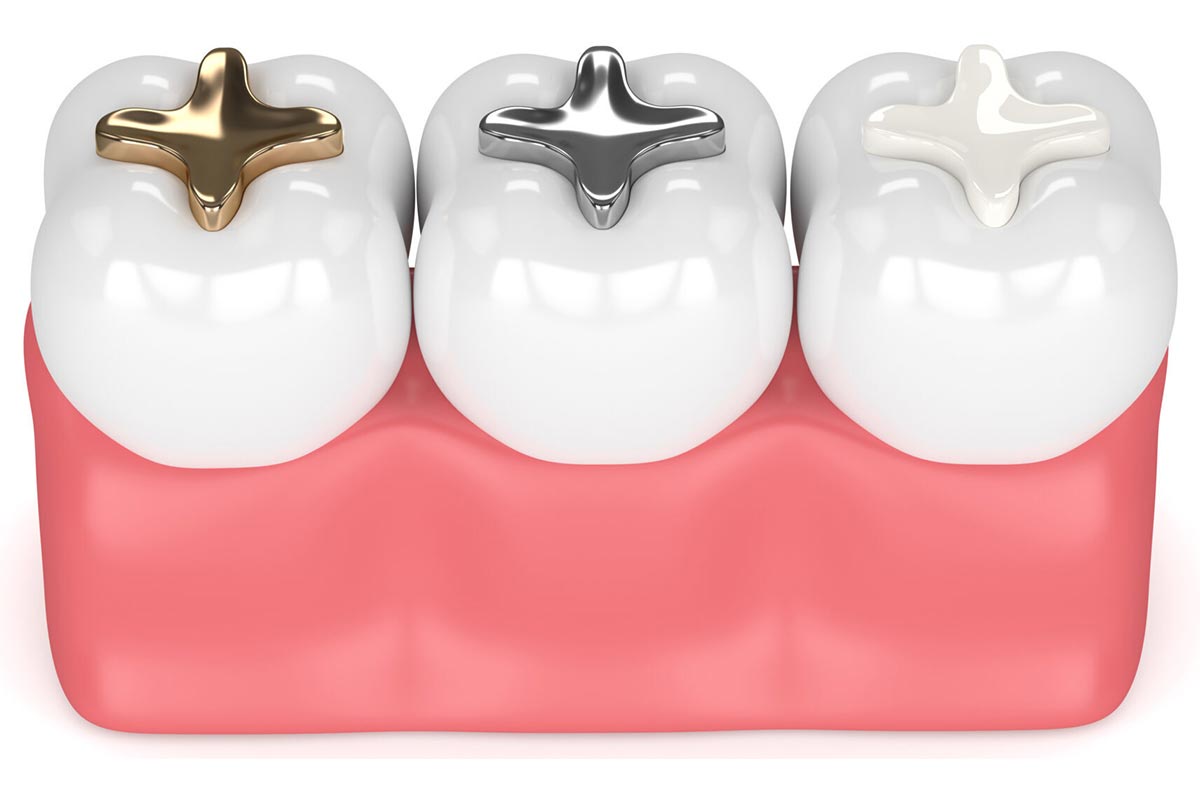Dental filing
Also known as dental contouring or reshaping, is a cosmetic dental procedure that involves removing small amounts of tooth enamel to improve the appearance of the teeth. It is typically used to correct minor imperfections such as small chips or irregularities in the shape of the teeth.
During the procedure, the dentist will use a specialized tool to carefully remove small amounts of enamel from the teeth to create a more uniform shape or smooth out rough edges. The process is usually painless and can be completed in a single office visit.
A dental filling is a relatively quick and non-invasive procedure, but it is not suitable for all types of dental problems. It is important to consult with a qualified dentist to determine whether dental filing is the right option for your specific needs.
Types Of Dental Filling
There are several types of dental fillings, including:
Amalgam Fillings:
These are also known as silver fillings and are made of a mixture of metals, including silver, mercury, tin, and copper. They are durable and can last for many years, but they are not tooth-colored and may not be suitable for visible teeth.
Composite Fillings:
These are made of a tooth-colored resin material and are also known as white fillings. They are less noticeable than amalgam fillings and can be matched to the color of the surrounding teeth, making them a popular choice for visible teeth. They may not be as durable as amalgam fillings and may need to be replaced after a few years.
Ceramic Fillings:
These are made of porcelain material and can be matched to the color of the surrounding teeth. They are highly durable and can last for many years, but they are more expensive than other types of fillings.
Glass Ionomer Fillings:
These are made of a mixture of acrylic and glass and are usually used for small fillings or fillings in areas that are not under too much pressure. They release fluoride, which can help prevent tooth decay.
Gold Fillings:
These are made of a mixture of gold, copper, and other metals and are highly durable. They are also expensive and may not be suitable for visible teeth.
Your dentist can recommend the best type of filling for your specific needs based on the location and size of the cavity, the cost, and your preferences.
Procedure For Front Teeth Filling
The procedure for front teeth filling typically involves the following steps:
Assessment:
Your dentist will examine your teeth to determine the extent of the damage or decay that needs to be filled.
Anesthesia:
If the filling is deep or close to the nerve, your dentist may numb the area with a local anesthetic to ensure your comfort during the procedure.
Removal Of Decay:
The dentist will use a drill or laser to remove the decayed or damaged portion of the tooth, creating a clean and smooth surface for the filling.
Preparation Of The Tooth:
The dentist will etch the surface of the tooth with an acidic gel to help the filling material adhere to the tooth.
Placement Of Filling:
The dentist will apply the filling material to the prepared tooth and shape it to match the natural contour of the tooth.
Curing:
The dentist may use a special light to harden the filling material and ensure it sets properly.
Finishing:
The dentist will trim and polish the filling to make sure it looks and feels natural.
The entire process typically takes less than an hour, and you should be able to return to normal activities immediately afterward. It's important to follow your dentist's aftercare instructions, including avoiding hard or sticky foods and maintaining good oral hygiene to ensure the longevity of the filling.
Is Dental Filling Painful?
The process of getting a dental filling should not be painful, as your dentist will use local anesthesia to numb the area being treated. You may feel a slight pinch or pressure when the anesthetic is administered, but once it takes effect, you should not feel any pain during the procedure
After the filling is placed, you may experience some sensitivity or mild discomfort in the treated tooth for a few days. This is normal and should subside on its own. If you experience severe pain or discomfort that does not improve after a few days, you should contact your dentist.
It is worth noting that if a dental filling is not treated in a timely manner, the decay can progress and lead to more serious issues such as toothaches, infections, and even tooth loss. So it is important to address any dental issues as soon as possible to prevent further damage and pain.
How Long Can Dental Fillings Last?
The lifespan of dental fillings can vary depending on several factors, including the type of filling material used, the size and location of the filling, and how well the filling is cared for over time. In general, dental fillings can last anywhere from 5 to 15 years or more.


No comments yet